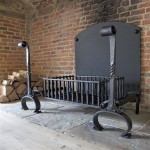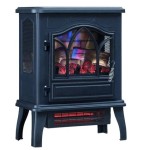The Enduring Appeal of Old Stone Fireplaces
Old stone fireplaces represent more than just a source of heat; they are a testament to craftsmanship, history, and the enduring allure of natural materials. These fireplaces, often found in historic homes and rustic settings, evoke a sense of warmth, security, and connection to the past. Their construction and design reflect the architectural sensibilities of bygone eras, and their presence adds a unique character and value to any property.
The construction of an old stone fireplace involved significant labor and skill. Before the advent of modern machinery, stone was quarried by hand, transported using animal power or simple machines, and carefully shaped to fit the intended design. Masons, possessing specialized knowledge of stone types and construction techniques, meticulously assembled the fireplace, ensuring structural integrity and aesthetic appeal. Mortar, typically composed of lime, sand, and water, held the stones together, creating a durable and fire-resistant structure. The process was time-consuming and demanding, but the resulting fireplaces were built to last, often serving as focal points in homes for generations.
The materials used in old stone fireplaces varied depending on the region and available resources. Fieldstone, gathered from local fields and streams, was a common choice due to its abundance and natural appearance. Other materials included sandstone, limestone, granite, and slate, each offering unique textures, colors, and properties. The selection of stone influenced the overall look of the fireplace, reflecting the geological landscape of the area. The diversity of stone types added to the individuality of each fireplace, making them distinctive works of art.
Historical Significance and Architectural Styles
Old stone fireplaces are deeply intertwined with the history of architecture and interior design. Their prevalence in colonial-era homes underscores their importance as essential heating and cooking facilities. The large, open hearths of these fireplaces served as the center of family life, providing warmth, light, and a place to prepare meals. As heating technology advanced, fireplaces evolved in design, incorporating features such as dampers, fireboxes, and more efficient flues. These changes reflected a growing understanding of thermodynamics and a desire to improve the performance of the fireplace.
Architectural styles greatly influenced the design of old stone fireplaces. In early American homes, simple, functional fireplaces were common, reflecting the practical needs of the settlers. As wealth and sophistication grew, fireplaces became more elaborate, incorporating decorative elements such as carved mantels, ornate brickwork, and intricate stone patterns. Fireplaces in grand estates often featured imposing stone facades, reflecting the status and taste of the homeowners. Different architectural periods, such as the Federal, Georgian, and Victorian eras, each contributed unique design features to the fireplaces of the time, creating a rich tapestry of styles.
The presence of an old stone fireplace can provide valuable clues about the history of a building and its previous occupants. Examining the materials, construction techniques, and decorative details can reveal information about the age of the structure, the social status of its inhabitants, and the prevailing architectural trends of the period. Historical societies and preservation organizations often rely on the study of old fireplaces to gain insights into the past and to inform restoration efforts. By preserving these historic features, we maintain a tangible connection to our cultural heritage.
Restoration and Preservation Techniques
Restoring an old stone fireplace requires specialized knowledge and careful attention to detail. Before undertaking any restoration work, it is essential to assess the condition of the fireplace and identify any structural issues or material deterioration. Cracks, loose stones, and damaged mortar are common problems that need to be addressed. A qualified mason experienced in historic preservation can provide valuable guidance and expertise in determining the appropriate restoration methods.
The preservation of original materials is a key principle in fireplace restoration. Whenever possible, existing stones should be cleaned and repaired rather than replaced. Gentle cleaning methods, such as brushing with a soft brush and using mild detergents, can remove dirt and grime without damaging the surface of the stone. Damaged mortar can be carefully removed and replaced with a matching mortar mixture. It is important to use a mortar that is compatible with the existing stone to avoid damaging the structure. In some cases, severely damaged stones may need to be replaced with stones of similar size, shape, and color.
Structural repairs are often necessary to ensure the stability and safety of an old stone fireplace. Cracks in the firebox or flue can compromise the integrity of the fireplace and pose a fire hazard. These cracks should be repaired by a qualified mason using appropriate materials and techniques. It is also important to ensure that the flue is properly lined to prevent the escape of smoke and gases into the home. In some cases, a new flue liner may need to be installed to meet modern safety standards. Careful attention to structural details is essential to preserving the functionality and longevity of an old stone fireplace.
The Timelessness of Natural Materials
The enduring appeal of old stone fireplaces lies in their inherent connection to the natural world. The use of natural materials, such as stone, creates a sense of authenticity and grounding that is often lacking in modern construction. The unique textures, colors, and patterns of the stone add visual interest and depth to the fireplace, making it a focal point in any room. The natural variations in the stone provide a sense of individuality, ensuring that no two fireplaces are exactly alike.
Stone is a remarkably durable and long-lasting material, making it an ideal choice for fireplace construction. Properly maintained, a stone fireplace can last for centuries, providing warmth and beauty for generations. The inherent fire resistance of stone makes it a safe and reliable building material for fireplaces. Unlike some synthetic materials, stone does not emit harmful fumes or gases when exposed to heat, making it a healthy and environmentally friendly choice.
The sustainable qualities of stone are increasingly recognized in modern construction. Stone is a naturally occurring material that requires minimal processing compared to many other building materials. The use of locally sourced stone can reduce transportation costs and environmental impact. Reclaimed stone from demolished buildings can also be used in new construction, further reducing waste and conserving resources. By embracing the use of natural materials like stone, we can create more sustainable and environmentally responsible buildings.
The ambiance created by an old stone fireplace is unmatched. The crackling fire, the flickering flames, and the warm glow of the hearth create a sense of comfort and tranquility. The natural texture and color of the stone add to the visual appeal, making the fireplace a captivating focal point. Whether used for heating or simply for creating a cozy atmosphere, an old stone fireplace can transform a house into a home.

65 Best Stone Fireplace Design Ideas To Ignite Your Decor Cottage Designs Farmhouse

Old Stone Fireplace In The Basement Stock Photo Adobe

A Unique Collection Of Antique Stone Fireplace Mantles By Ancient Surfaces Page 1

Restoring An Old Fireplace Adds Style To Your Home London Stonemasonry

Fireplace In Old Stone Cozy Interior With Armchair Lanterns And Candles Stock Ilration Adobe

A Unique Collection Of Antique Stone Fireplace Mantles By Ancient Surfaces Page 1

Normandy Cast Stone Fireplace Mantel Klassisch Wohnbereich Dallas Von Old World Stoneworks Houzz

Manchester Cast Stone Fireplace Mantels Old World Stoneworks

The Perfect Feng Shui Stone Fireplace By Ancient Surfaces Italian French

Stone Fireplace Makeover Part 1 Plans Prep Organized Ish








